More Minimalist, and Better for Entertaining and Naps? Why I'm Now a Big Advocate for "Single-Cushion Sofas"
A bench seat sofa is a great alternative to the traditional multi-cushion option. We asked the experts to share why and how they'd pick this ultra-chic couch if they were shopping themselves


Most Invested is a monthly series in which one of our style editors or a friend of Livingetc explains the do’s and don’ts of making the most important product decisions, and showcases the items they’d be adding to their cart.
Add this to your list of considerations when buying a sofa: single-cushion or multi-cushion? Do you know the difference?
If not, it's exactly as it sounds. A single-cushion sofa, or bench seat sofa, is characterized by its singular, continuous seat — no tiny gaps or separate seats, as is the case with its multi-cushion counterpart. Aesthetically, single-cushion sofas add a "clean, minimalist vibe to any space, making it feel more contemporary and cohesive," says designer Alice Moszczynski. But is it the best sofa for you? How do you know?
Below, we'll tackle the pros and cons of bench seat sofas before diving into a curated selection of options sourced from some of the best couch retailers on the market. I spend all day speaking with sofa experts and researching sofa brands to understand the considerations you should make when purchasing a new loveseat, three-seater, or sectional.
Unless otherwise stated, I haven't spent time with any of these selections in person; but trust that everything I've learned plus a healthy dose of research and review reading went into each pick.
What is a single-cushion, or bench seat, sofa?
"A single-cushion or bench-seat sofa is essentially one long, continuous cushion that spans the entire seating area, giving it a sleek and modern look," says Alice, an interior designer at Planner 5D. "The design is incredibly versatile, working well in both small and large spaces, and it helps distribute wear evenly over time."
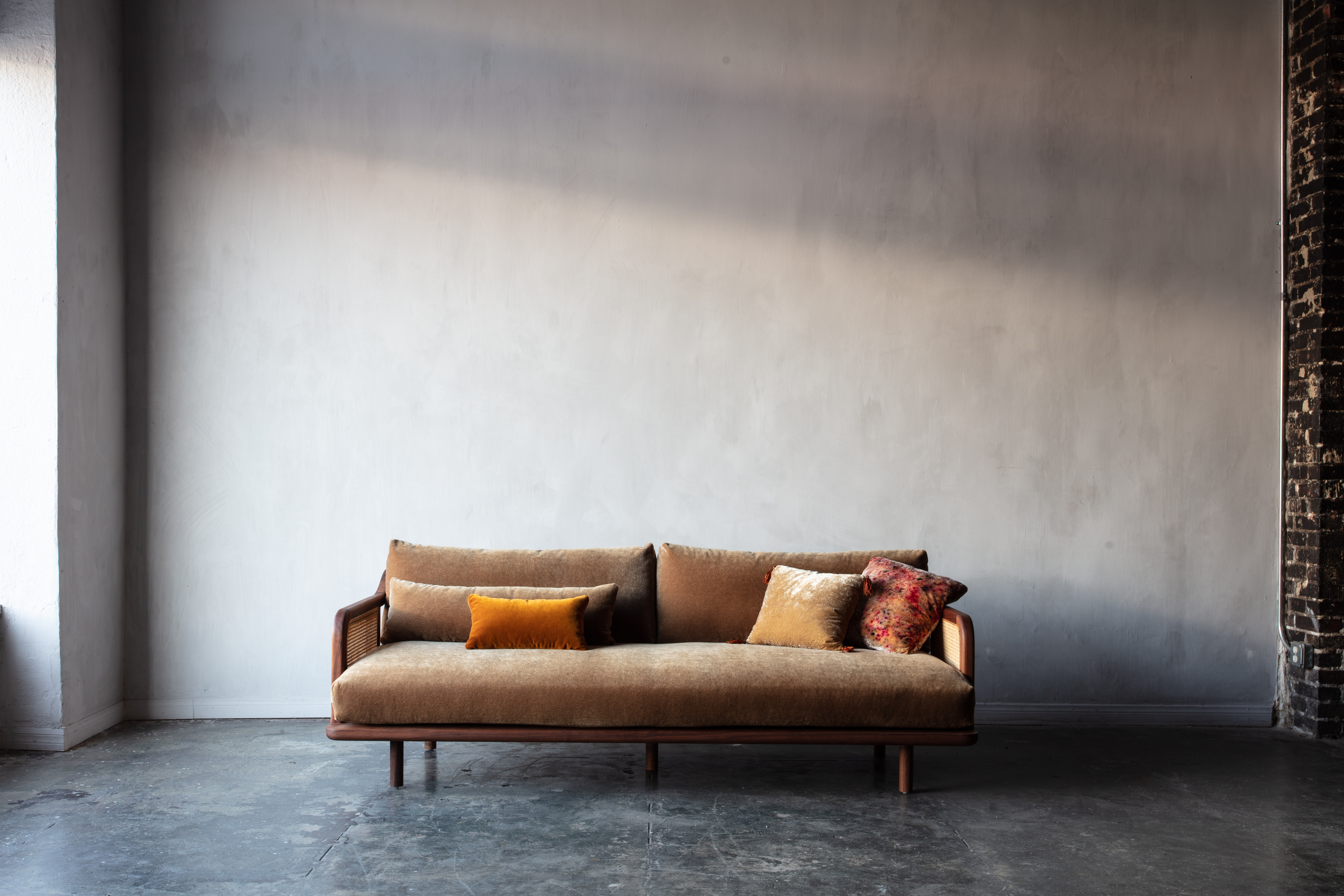
What are the pros and cons of a single-cushion sofa?
Let's start with benefits.
The Livingetc newsletters are your inside source for what’s shaping interiors now - and what’s next. Discover trend forecasts, smart style ideas, and curated shopping inspiration that brings design to life. Subscribe today and stay ahead of the curve.
Most obviously and perhaps most importantly, there are no between-cushion gaps with a bench seat. No one gets the awkward middle spot, where their butt sinks uncomfortably into the couch. And even better, you can't feel the separation when lying or loafing. "I love how the uninterrupted surface is perfect for lounging or napping, without the discomfort of gaps between cushions," Alice adds.
A bench seat sofa "offers a beautiful, seamless look while feeling more connective to those seated, rather than an option with multiple, divided cushions," interior designer Kate Marker writes in her forthcoming book, The Love of Home: Interiors for Beauty, Balance, and Belonging. "And really, if you end up being the one who has to sit on the sofa crease, it kind of makes you feel like you’re the extra or the overflow in the space — the opposite of a sense of belonging, am I right?"
But even the nicest, most elegant sofas have downsides — and the single-cushion sofa is no exception. For starters, Alice says, the cushion might start to noticeably sag from use. And outside of replacing the cushion or adding more foam/fill, there's not much you can do. With a multi-cushion sofa, the sagging might be limited to just one area of the couch ... and it's likely much easier to order a replacement in that scenario. Moreover, it can be a bit harder to maintain a bench seat sofa, Alice continues, "since it's harder to fluff and keep even compared to multiple smaller cushions."
What should I consider when buying a single-cushion sofa?
Outside of things like sofa depth and sofa dimensions, which you should optimize for your space specifically, Alice recommends looking for "high-density foam cushions for better shape retention, and maybe even a down or down-alternative fill for added comfort." Add in a "strong support structure and durable fabric" to prevent sagging and wear and you're golden.
Generally speaking, a well-made couch will have a solid hardwood or engineered wood /plywood frame; bonus points if the wood is kiln-dried. Metal frames are the next best, but treat wood as your North Star. It will be more expensive, but the couch will almost certainly last a long time.
"A well-made sofa will place a premium on its frame, joinery, upholstery, and cushion," says Meagan Endres, category manager of upholstery at Raymour & Flanigan. As you shop, look for "preferred materials like a strong wood or metal frame, mortise-and-tenon and dowel joints, and cushions made with quality fillings such as foam or feathers," she tells me. "These materials are more durable and can keep the couch in tip-top shape for longer."
If you love to host and need a seating vignette that accommodates that, or if you love a nap on your couch and need a sofa that amplifies your comfort, consider a bench seat. But if you think you'd rather the mass-market convenience that comes with the more common construction, multi-cushion might be the move for you.
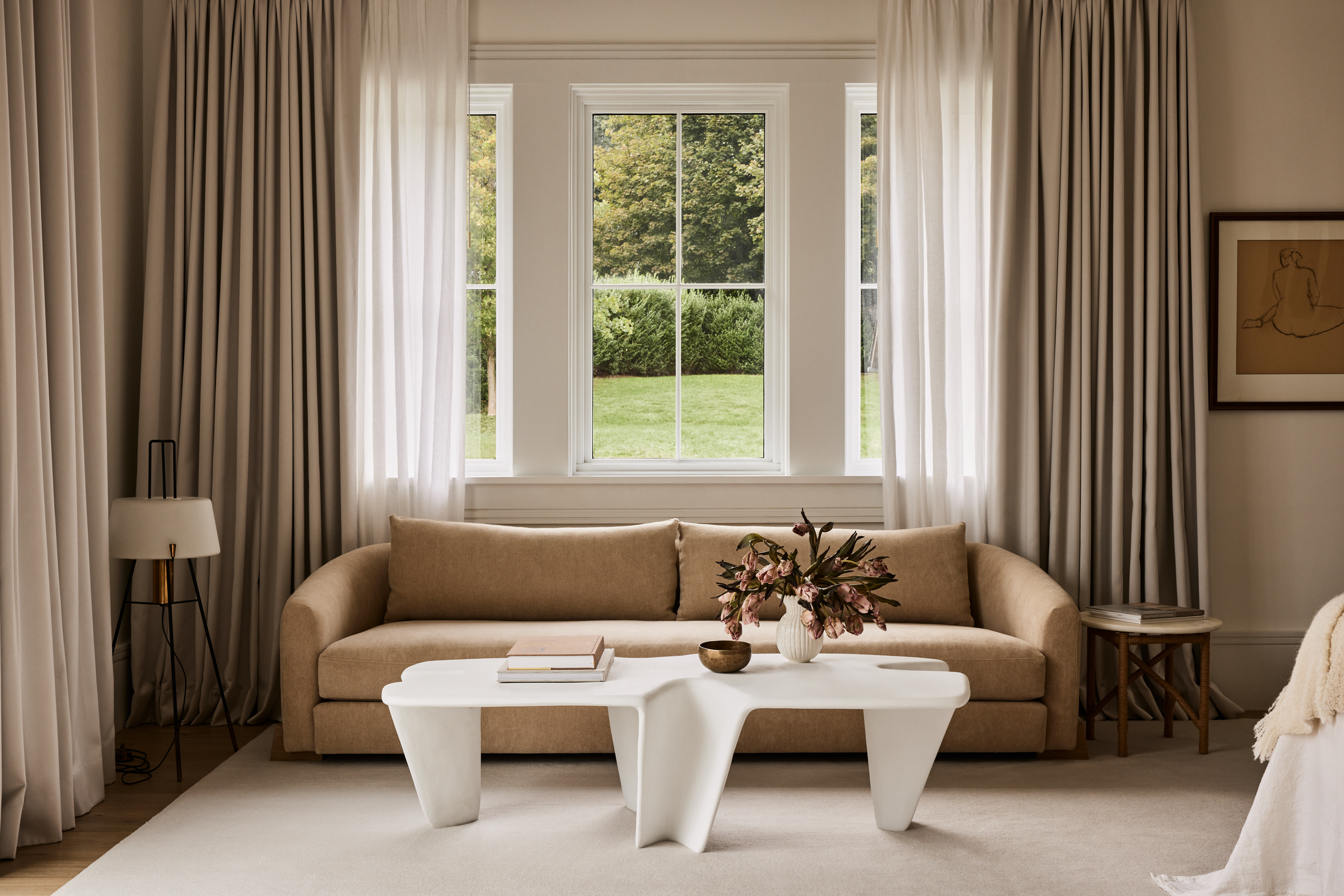
12 single-cushion sofas to shop now
All this talk got you ready to shop? Say no more. Below, find my thoughtfully curated list of single-cushions sofa to buy now, each selected from a trusted or designer-endorsed brand and in accordance with the quality standards I've gleaned from a myriad of experts.
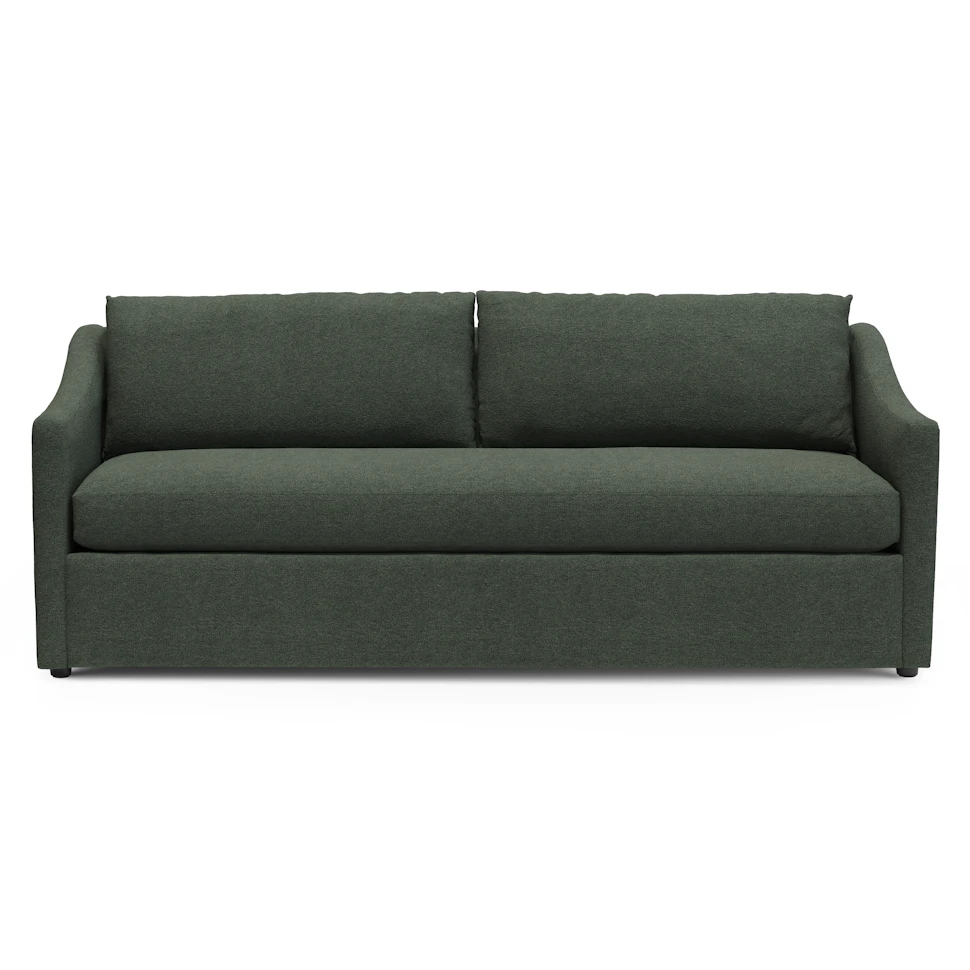
Price: $1649
Size: 34"H x 84.5"W x 36"D
Customer Rating: 4.8 stars (6 reviews)
Starting off strong with a gorgeous pick from Article, one of (in my opinion) the best places to shop for well-made but fairly-priced and affordable couches that will last. The Landry is relatively new, so it doesn't have too many reviews just yet ... but those that are available are overwhelmingly positive. "Very comfortable and sleek -- not too big, and a great addition to our living room area," said one buyer. "It’s gorgeous! I’m obsessed with it! The fabric is so soft and plush," added another, whose product was upholstered in "Napa Dove."
This green boucle is 75% polyester, which has both pros and cons. The downside is it won't feel as great as a 100% wool boucle, but its synthetic makeup should hold up well over time. Suspension-wise, we're talking sinuous springs, which Meagan from R&F has described as a wonderful and durable affordable option. I'm not sure what kind of foam fill the Landry is working with, but I can tell you as a former owner of an Article couch that they're very plush and comfortable.
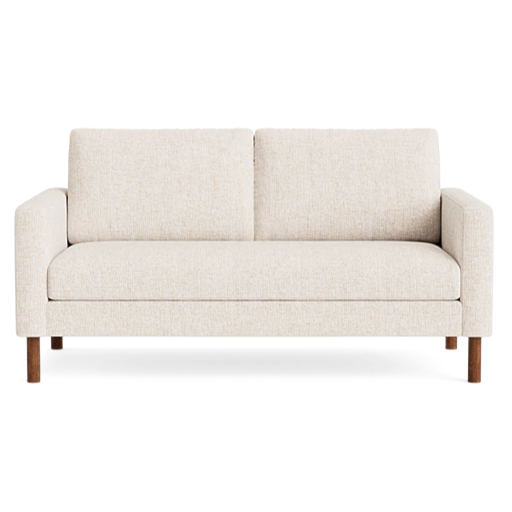
Price: $2179
Size: 65" - 100" W x 38" D x 34" H
Customer Rating: 4.6 stars (13 reviews)
A number of designers and editors have described Benchmade Modern as an excellent place to shop for well-made, USA-manufactured sofas that, while pricey, prove to be an excellent investment. They even offer customizable widths, so you can adjust the size of the product to better fit your room.
Of the single-cushion options on the website, the Laguna had the most reviews, which is why I chose it here. Its 7" legs are removable, which I thought might come in handy when moving into tight apartments, and the seat cushions are filled with high-resiliency foam — the top-of-the-line industry standard, per Ameer Radwan owner of LA-based upholsterers Soot Design Studio. And aside from its construction, the look of the sofa is quite sleek and versatile; incredibly mid-century modern in appearance, but that's never a bad thing. In fact, MCM's timelessness is one of its biggest draws.

Price: $2299
Size: 96.5"W x 43.5"D x 24.38"H
Customer Rating: 4.8 stars (34 reviews)
This low-profile, velvet-covered sofa not only pays homage to current sofa color trends (nature-inspired hues are big right now), but it would look excellent in a contemporary living room. Reviews are strong, despite only 34 of them, and 27 out of 29 reviewers said they would recommend the product. If you're looking for something plush and low, that you can really sink into, this could be the pick.
Buyers describe it as the "perfect low couch," "durable," and "cozy." The velvet looks perfect for a nap, and the deep seat is ideal for loafing around. But maybe skip it if you have elderly visitors or back trouble, in which case you'd probably prefer something taller and a bit more firm.
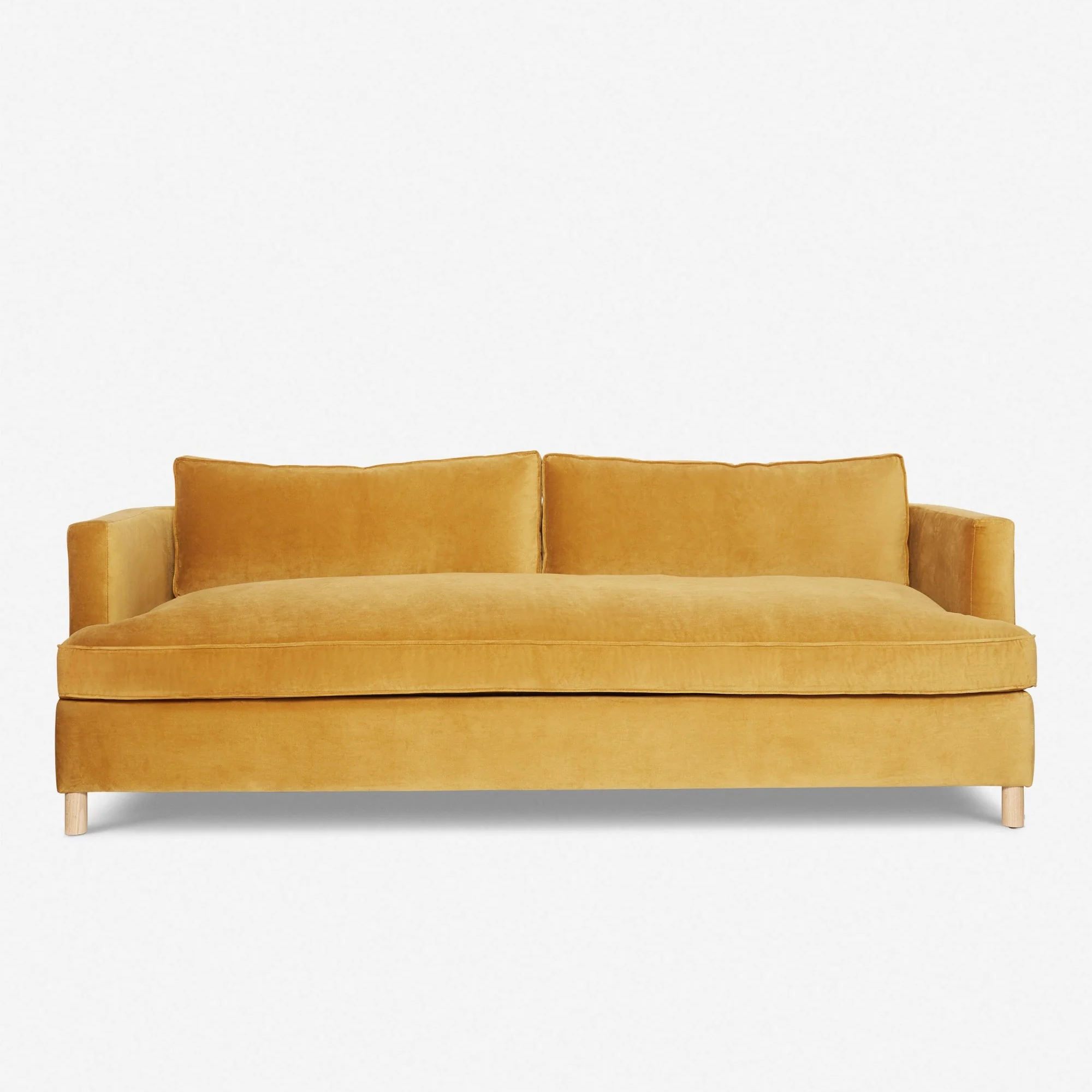
Price: $3298
Size: 72"W x 37"D x 32"H
Customer Rating: Unavailable
I can't say that I've ever tried a sofa from Lulu and Georgia, but I can tell you that, aesthetically, it's one of my favorite places to window shop. In this case, the lovely Belmont toes the line between loveseat and three-seater while paying homage to the designer's UK heritage and LA roots. And although it's available in a variety of different fabrics, I positively love the golden velvet for its warm but bright tone.
The Belmont has a medium-firm seat — to me, that suggests it's great for most if not all loungers, unless a personal preference sways you strongly one way or the other. From a construction standpoint, things are looking just as good. High-resiliency foam seats, hardwood and plywood construction, and removable legs. Chef's kiss.
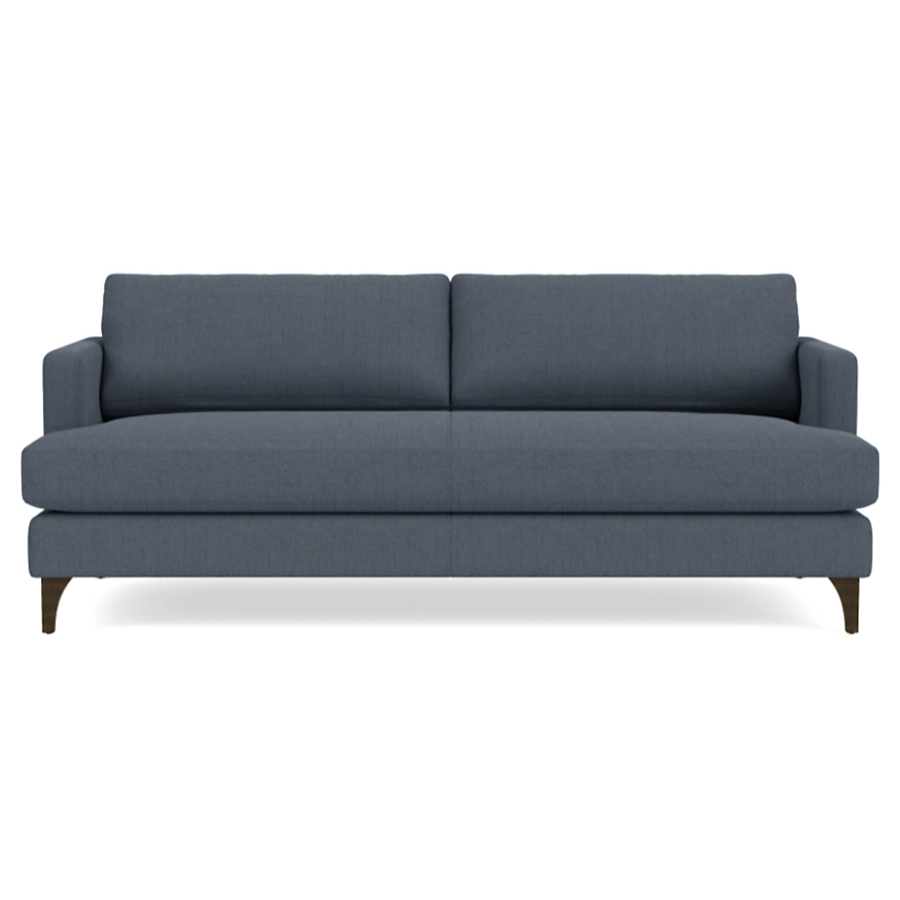
Price: $1799
Size: 76"W x 37"D x 30"H
Customer Rating: 4.6 stars (10 reviews)
Room & Board is yet another brand beloved by industry insiders and consumers alike. On the expensive side, yes, but known for quality, customer service, and customer experience. The Carlton doesn't boast a whole load of reviews — only 10 — but 89% of respondents said they'd recommend the product to a friend. The only "negative" review is a three-star — and it had more to do with the plushness of the cushions than overall quality.
Like many of its premier counterparts, Room & Board uses hardwood frames (a great sign of quality), as well as a sinuous coil suspension (s-shaped metal springs that are spread across the frame). Cushions are high-resiliency CertiPUR, wrapped in fiber and covered in a ticking fabric.
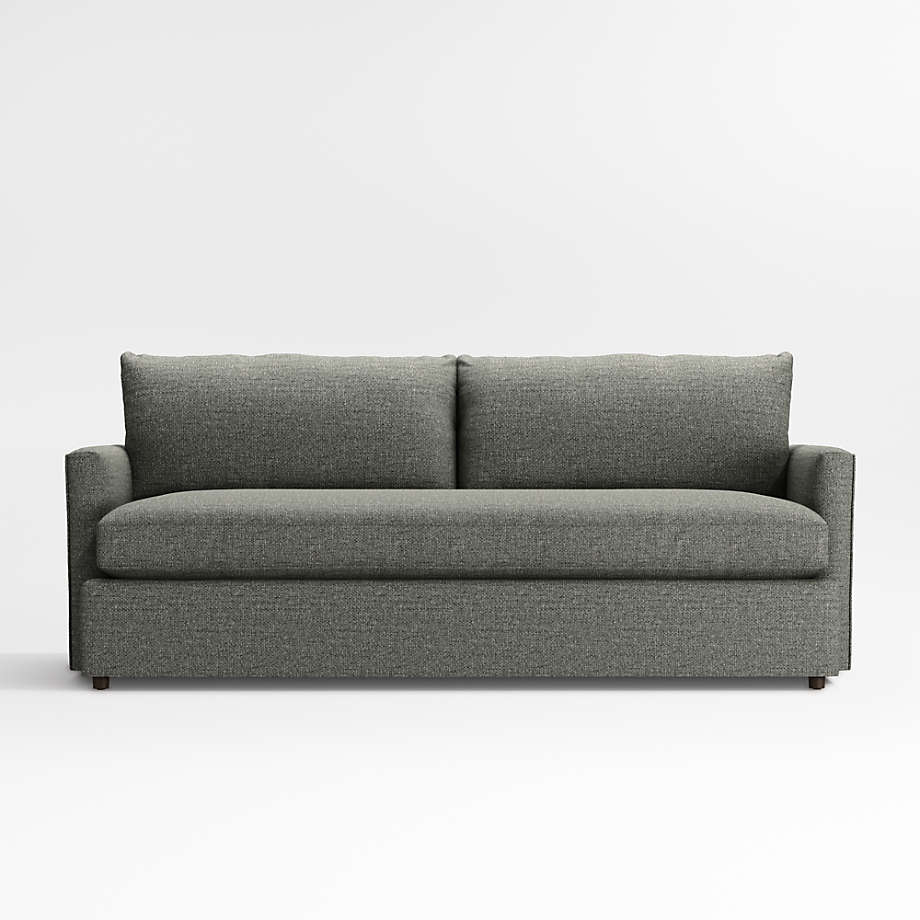
Price: $2199
Size: 83" W x 46" D x 37" H
Customer Rating: 4.5 stars (2466 reviews)
My draw to the Lounge Bench Sofa from Crate & Barrel was the option for an extra deep seat. That, plus the versatile, minimalist frame and plethora of customer reviews earned this beauty its spot on my list. The cushions are neither too soft not too firm, per customers, and the seat height is middle of the road, too.
A scroll through buyer photos showed a product that looks just as good in real life as it does in the product description. Perhaps that's thanks to the hardwood frame, which was also kiln-dried to prevent warping. One reviewer, who purchased the three-seat version, said she has had the couch for seven years and "it is just as comfortable as the day we bought it," even with "two young kids and a large dog." Added another buyer: "We love this sofa. It is so comfy and looks beautiful. The salesperson was helpful and the delivery was great."
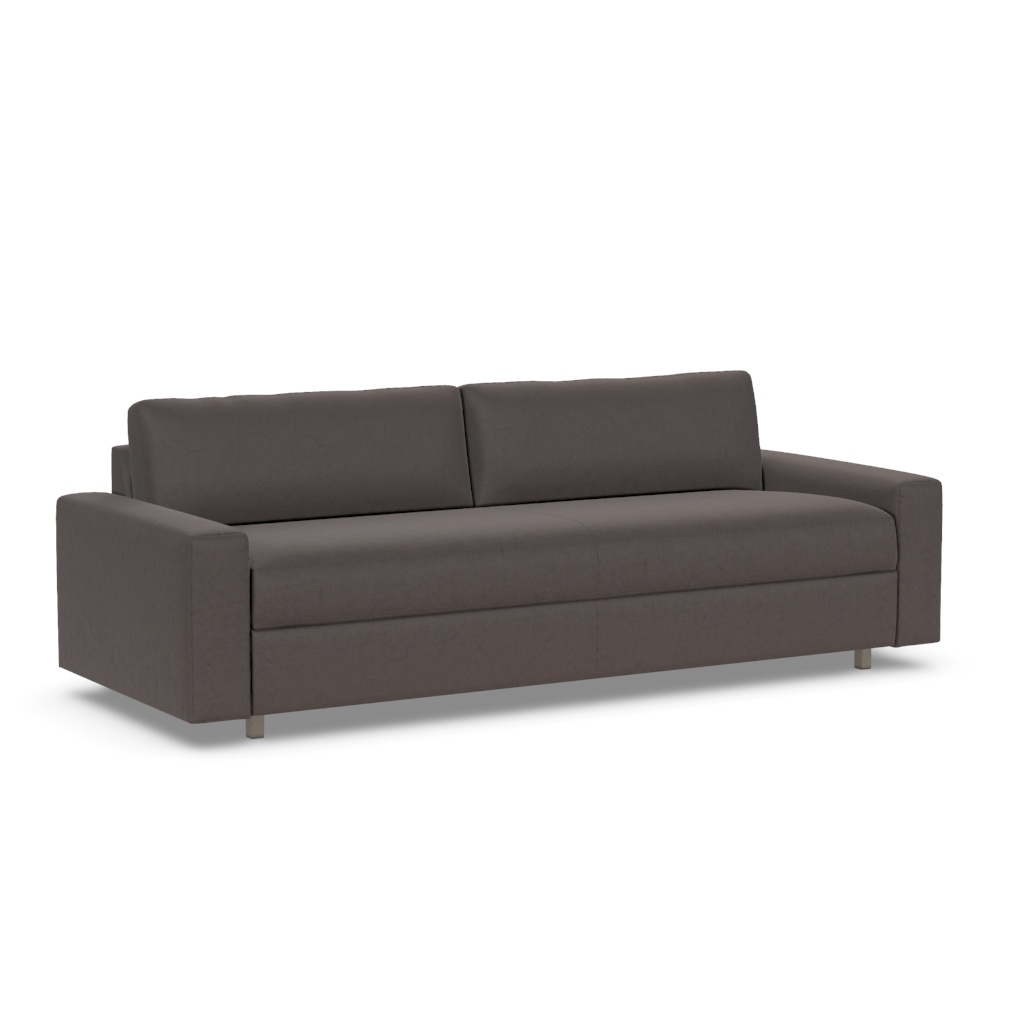
Price: $3499 (Retailer Dependant)
Size: 35" H x 40" D x 97" W
Customer Rating: Unavailable
My colleague, Dabee Kaye, owns a sleeper sofa from manufacturer American Leather and described it as "super durable" and "comfortable." She owns the Harris, not the Wade, but it stands to reason that the latter would be just as high-quality, comfortable, and well-made as the former.
Choose from an absolute plethora of upholstery options, leather included, as well as leg height and color. The ultimate customization process, and with that gorgeous bench seat to boot.
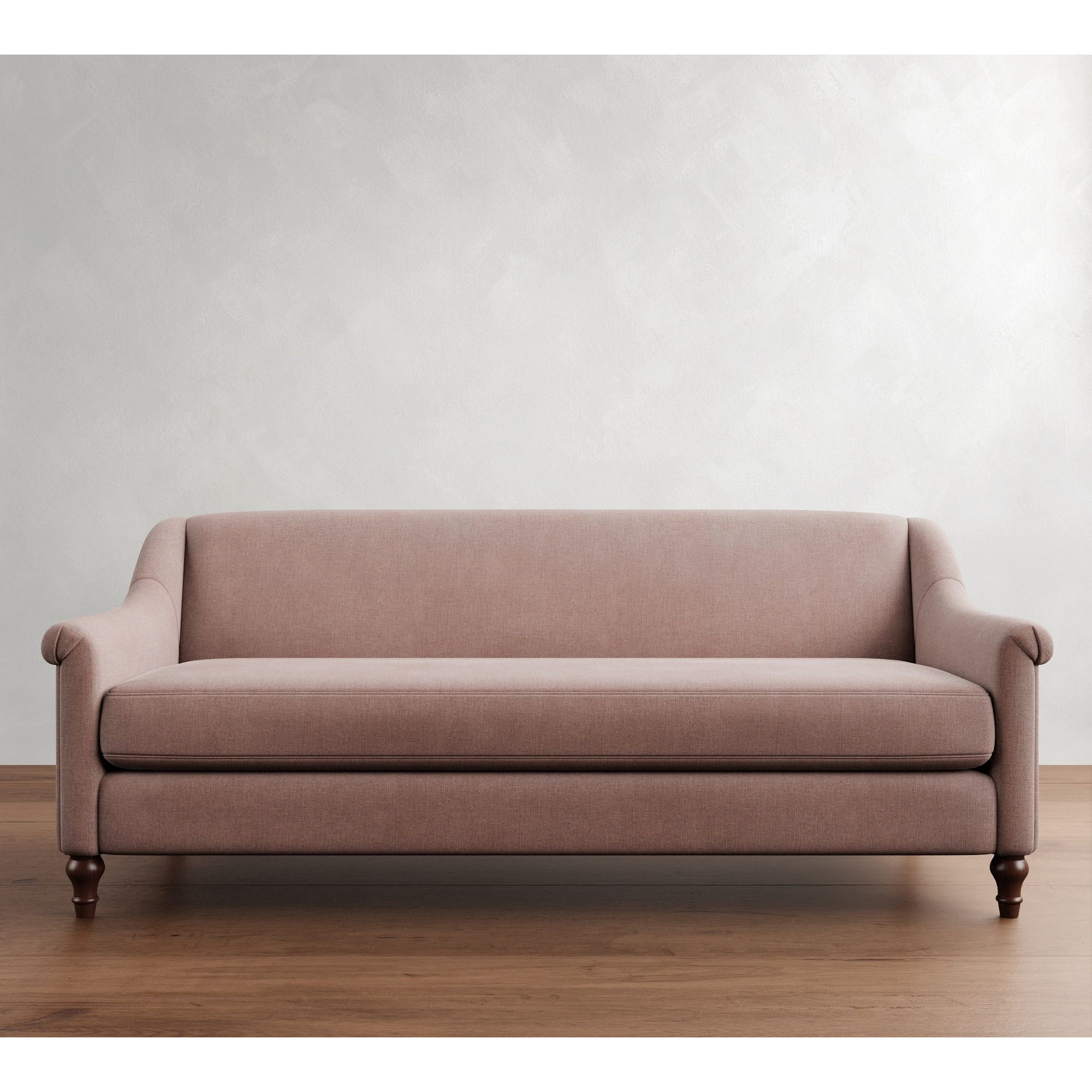
Price: $899
Size: 81.5" W x 37" D x 33.5" H
Customer Rating: Unavailable
Aesthetically, the Josie is serving up a healthy dose of English Roll Arm, perfect for traditional, vintage, or cottage-style homes and spaces. But I must admit that this blushy pink-purple upholstery really modernizes things. Well-priced, chic as all get out, and crafted with that signature Pottery Barn flair, the Josie would work as a great bit of juxtaposition in a contemporary room or a well-fitting, perfectly placed accent in an old-school space.
The frame itself is compact, so it would be a great option for small spaces, and the legs are removable if you need help navigating tight corners.
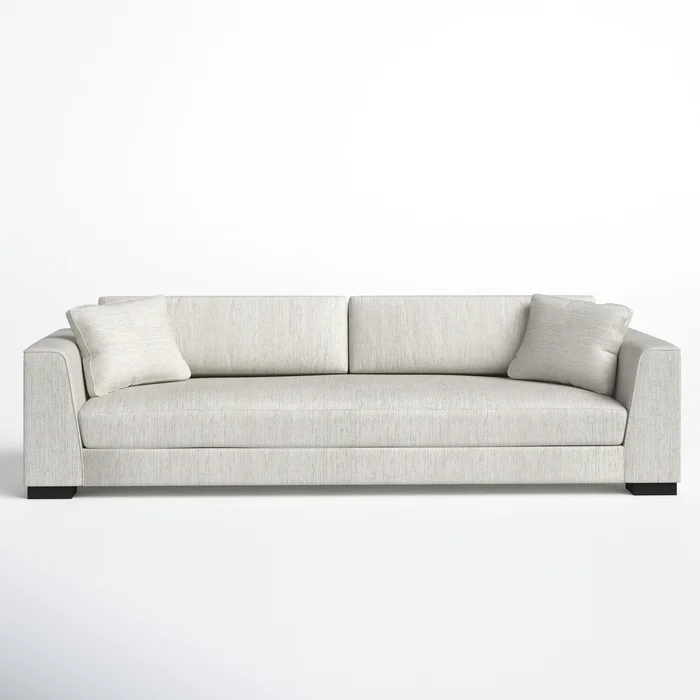
Price: $1899
Size: 28'' H X 99'' W X 40'' D
Customer Rating: 4.8 stars (81 reviews)
The Wayfair sale section is a tricky one to navigate, as any ardent shopper knows. There are plenty of wonderful options, sure, but there are also plenty of varying and sub-par quality; the real work is discerning between the two. While you'll have to wait a few weeks for this discounted single-cushion sofa from Wayfair label Joss & Main, all signs point to a worthwhile purchase: A 4.8-star average rating across 81 reviews (insanely good for a marketplace like this), high-resiliency foam seats, gorgeous customer photos, and a gorgeous low-profile frame oozing with modern charm.
A quick look at the reviews confirms this really is a low sofa with a low seat height; if you're on the taller side or struggle to go from sitting to standing for whatever reason, perhaps skip this piece. The color is for sure more akin to cream/beige than white, and the fabric looks more like linen in that it definitely wrinkles, but customers sound nonetheless pleased.
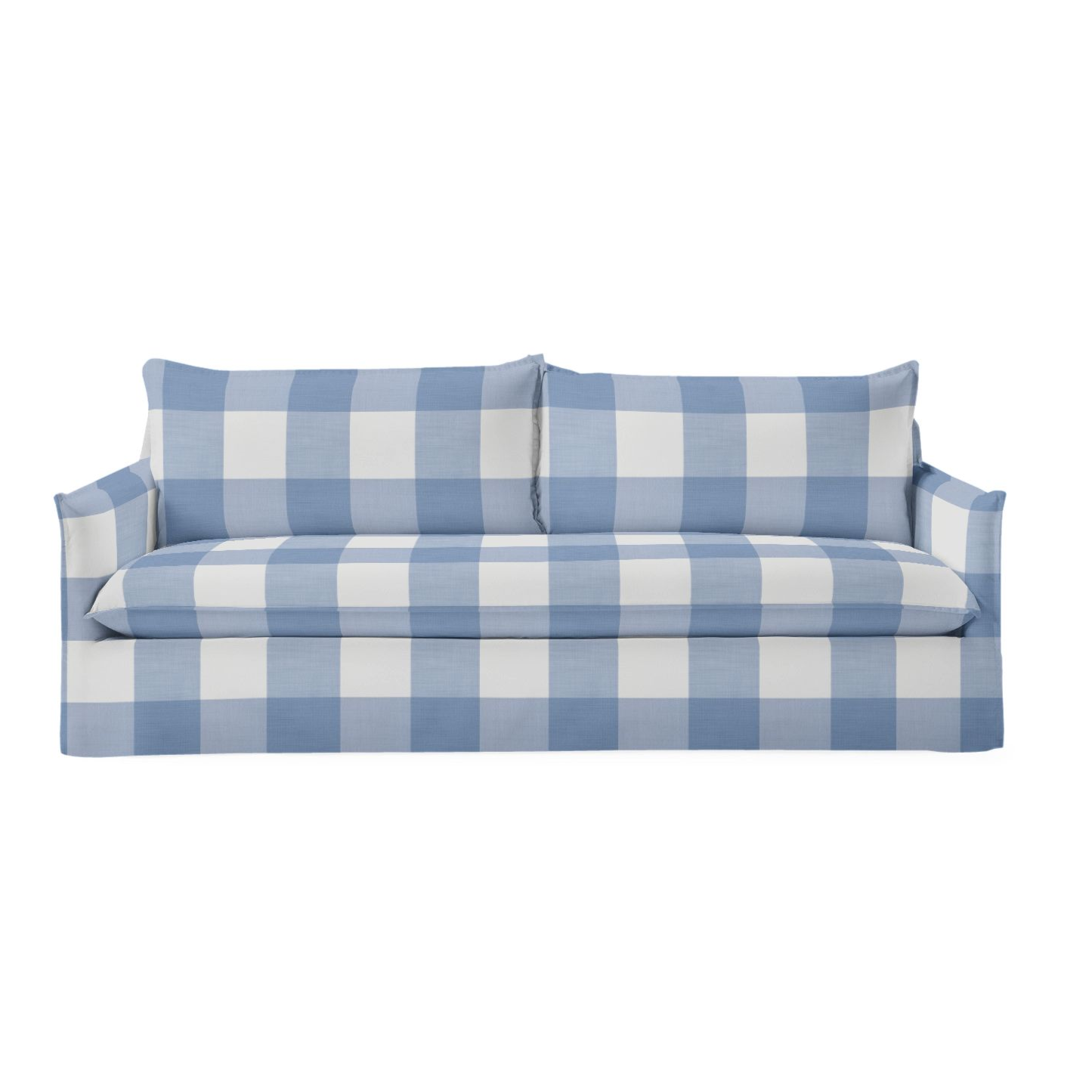
Price: $5198
Size: 93"W x 39"D x 35"H
Customer Rating: Unavailable
If you ask me, you'd never know this slipcover sofa doubles as an outdoor sofa — especially with the pinstripe coastal blue fabric (my favorite option of the many available). The cover is washable, as expected, but it is also designed to repel water, resist mildew, and withstand extreme sun and heat without fading.
One construction element that stood out to me was the mortise-and-tenon joinery, which the expert from Raymour & Flanigan assured me is one of the best options on the market. The frame is solid wood and crafted from outdoor-grade birch. And although there aren't any reviews available, Serena & Lily has a reputation for quality, customer service, and overall excellence, so you should feel confident shopping here.
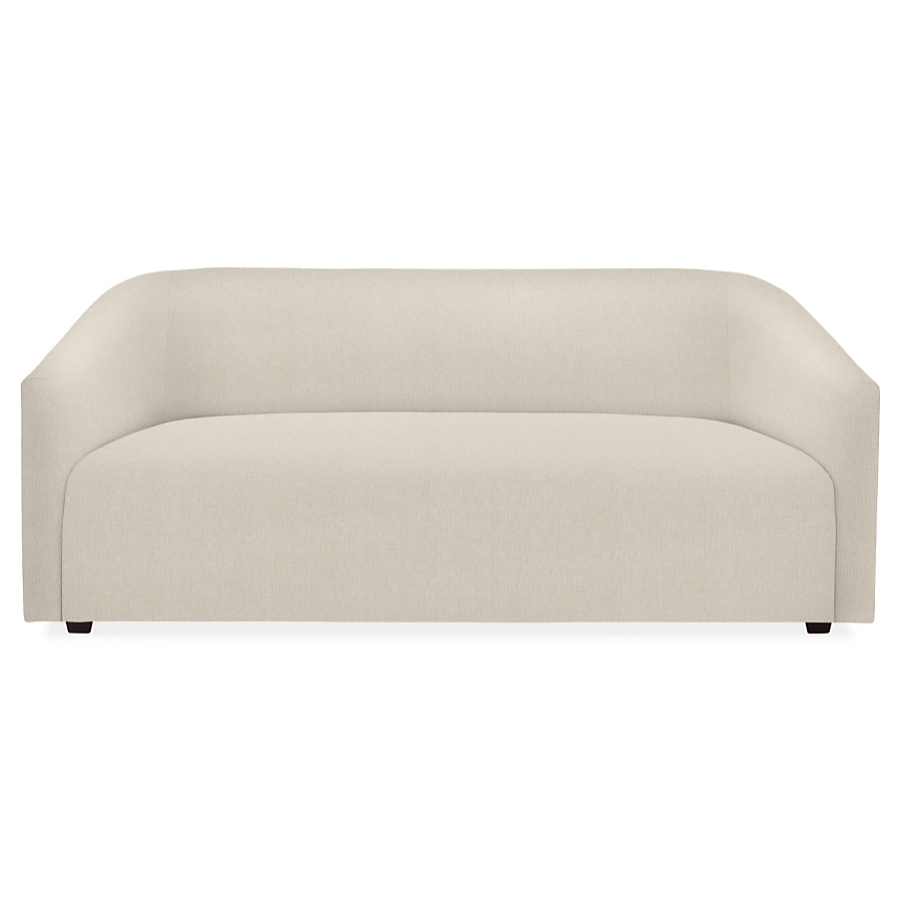
Price: $1499
Size: 70"W x 34"D x 30"H
Customer Rating: 4.7 stars (106 reviews)
Curved sofas typically have a bench cushion, but that didn't stop me from including one here, especially one as lovely as the Ada. Also from Room & Board, this 70" option looks like it would fit two people comfortably and three people with a bit of a squeeze. It's available in 235 (!!!) different fabrics, two of which (the "Tepic ivory" boucle pictured above, plus a "Vance Grey") are stocked and the other 233 made to order.
While a white boucle typically isn't my go-to recommendation for families with pets or kids, this option is actually 100% upcycled polypropylene — a generally durable, fade resistant, and pet-friendly fabric. Reviews here are also plentiful and positive; 94% of respondents said they'd recommend the Ada to a friend. "Contemporary, comfortable, good selection of fabric, sizes and well made in the USA," wrote one buyer. "Definitely worth the money. It has transformed my living room."
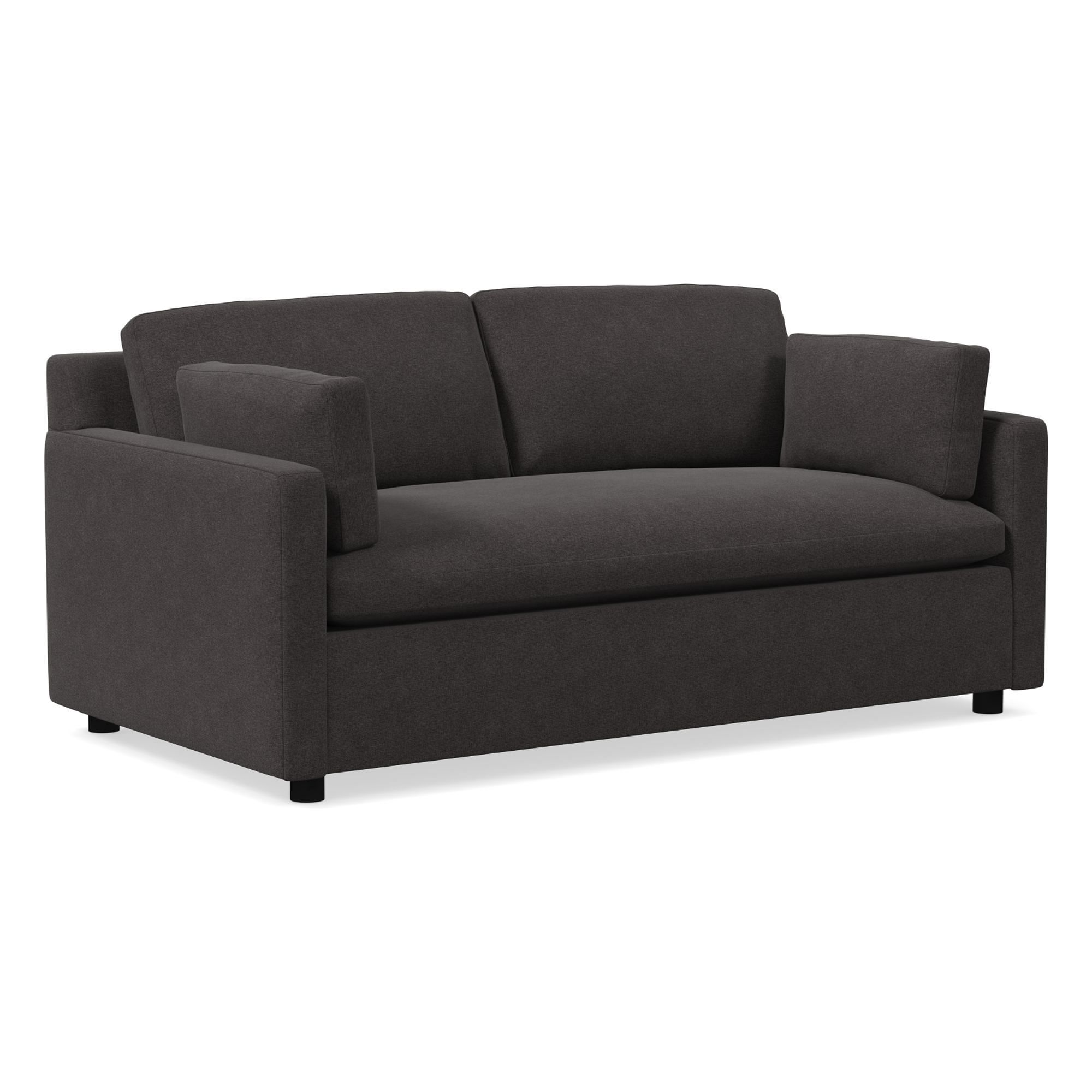
Price: From $1799
Size: 71" W x 38" D x 32" H
Customer Rating: Unavailable
The Marin is a West Elm best-seller — one I'm confident is owned by plenty of editors and casual shoppers alike. The frame itself gives coastal interior design vibes, although I sort-of negated that by selecting the slate velvet fabric you see above.
From a comfort perspective, these cushions are described as medium-firm; on a scale of one to five, five being the plushest, West Elm ranks them as a three. The other benefit here is the customizable width. If you love the look of the Marin but would prefer a longer frame, you can select an 86" width or a 94" width instead.
Can you mix single-cushion sofas with multi-cushion sofas?
If you're worried a bench seat sofa will limit your seating options going forward, don't worry; you can absolutely combine a single-cushion sofa with a multi-cushion sofa, Alice assures me. As with any design project, there aren't really any rules at the end of the day. If, after careful consideration, you can pull it off optically, go for it. Just be sure to "balance the room with complementary colors or textures and pay attention to proportions to create a dynamic yet harmonious look," she says.

Brigid Kennedy is a freelance writer and former style editor for Livingetc.com, where she scoured the internet for the best and most stylish deals on home decor and more. She also served as the website's in-house sofa expert, completely revamping and reworking Livingetc's expansive sofa buying guide by interviewing a total of 17 interior designers and sofa experts at top brands like Article and Benchmade Modern; sitting on upwards of 50 sofas across both Pittsburgh and New York City; extensively polling her friends and family for their own sofa-buying anecdotes and product recommendations; and traveling to Dallas, Texas, to tour the floor of a couch factory. In total, she estimates she has spent 40+ hours (and counting!) reading, writing, and talking about couches with accredited sofa connoisseurs o then pass that knowledge on to you. She describes her personal design style as colorful and clean, and in her free time enjoys reading, watching movies, and curating impossibly niche playlists on Spotify. She recently relocated from Manhattan to Pittsburgh, Pennsylvania, where she's decorating and DIYing a new home downtown.